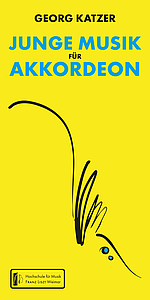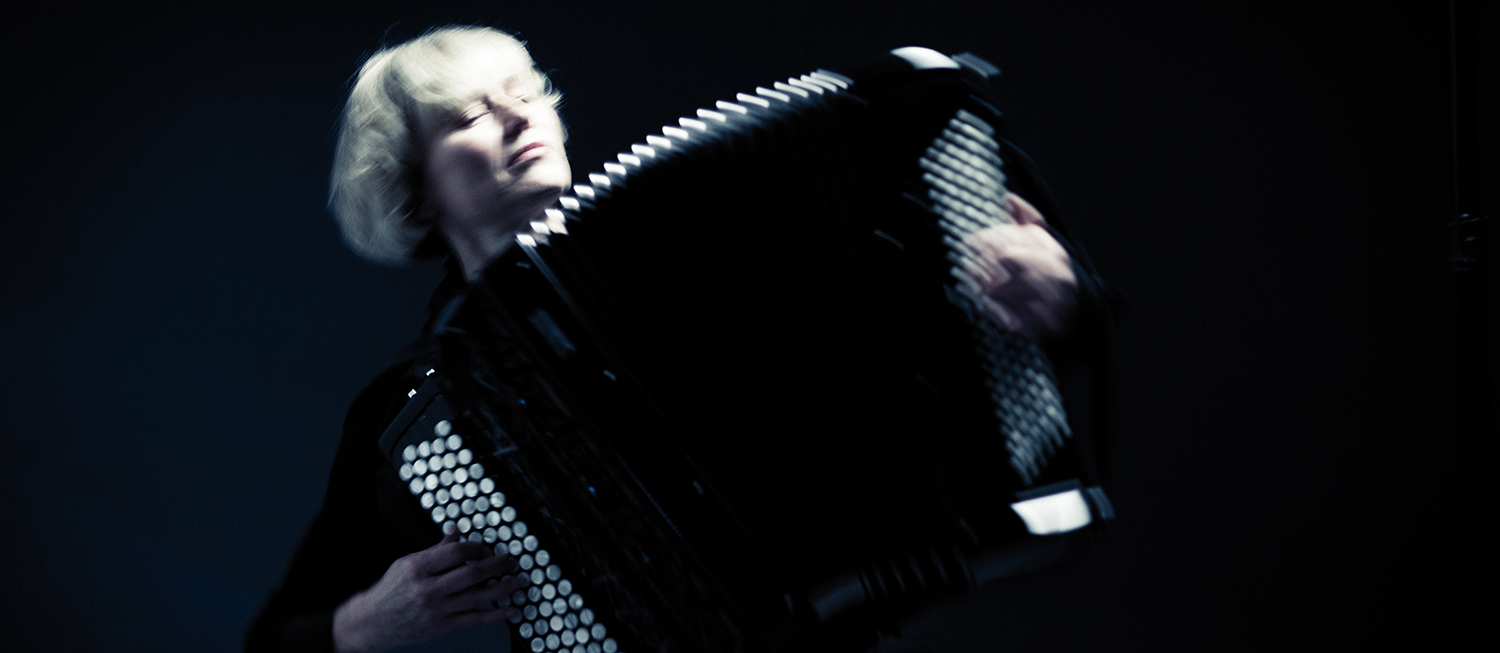Katzer project for re-listening on the YouTube channel of the university
By playing this video, personal data will be transferred to YouTube. If you agree, click on the link "Start video". You can find further information in our privacy policy.

Listen to music!
Isn't that the best way to get to know music?
When we all stayed inside our four walls with the first Corona wave in March 2020, the idea germinated:
What project can connect students? What can we work on together? What can we do to build bridges for future generations as well?
Composer Georg Katzer died in 2019 and would have celebrated his 85th anniversary in 2020.
So, why not set up a sound memorial? For Georg Katzer and for the younger generation!
With this recording, the accordion students of the music universities in Münster and Weimar present all the works that Georg Katzer composed for the youth: "Für Knöpfe" (Volumes I and II) and "Sechs Bagatellen".
37 compositions can be heard, explored and reinterpreted. A musical greeting from the University of Music FRANZ LISZT Weimar with an inspiration for things to come!
Prof. Claudia Buder
Questions and information:
Opportunity seized: How the "Katzer Project" came into being
At the beginning, there is a lot bowl, at the end, the Weimar University of Music experiences a great accordion day - with a future-oriented gift. In April 2020, seven accordion students from the music universities in Weimar and Münster will take the opportunity to counter a time of apparent social stagnation with an innovative and creative project together with the two initiators and teachers, Prof. Claudia Buder and Stephan Bahr: 36 solo pieces for accordion from the pen of composer Georg Katzer, who died in 2019, published in the three albums Für Knöpfe I, Für Knöpfe II and Sechs Bagatellen, are to be released on CD.
From the idea grows the deed: virtually the pieces are drawn by lot, their elaboration begins. The students are given the task of becoming particularly aware of this important phase of beginning in an artistic creative process: How does the musical text affect me? What does the work say? What are the technical and musical challenges? Fingerings are examined in detail for their meaningfulness and practicability, since dexterity and mental dexterity are mutually dependent to a considerable degree. Audio files bring first sound results. A lively exchange about interpretational questions allows the students to immerse themselves in Georg Katzer's compositional style and to sense how it must have interested and driven him "when established orders disintegrate, when static and dynamic replace each other, merge into each other, when pairings such as homogeneous and heterogeneous, free and bound, homophonic and polyphonic, in other ways chaos and order, noise and sound, continuity and break come into tension, 'out of control'." (from Freitag: Stefan Amzoll, Der Zerfall der Ordnungen) With the three Katzer albums, the aim is to explore and open up a compendium of outstanding character pieces of all degrees of difficulty in their playful and creative possibilities on the accordion.
The change from online to presence mode allows a seminar in Münster in July, which gives the interpretations that have grown in the meantime a first concerted "fine-tuning". The students will get a second one in August from Gerhard Scherer-Rügert, the spiritus rector of these albums, immediately before the sound recordings in September 2020.
Done? Anyone familiar with the subject knows that the work doesn't end here - especially for the sound engineer, but also for all the other players. Takes are meticulously checked and finalized into tracks in mastering. From the considerations of the project start and the experiences of the work realization the comments for the CD catalog develop. For every single track, inspirations for the character as well as peculiarities and hints for the elaboration are vividly illuminated in it - textually and graphically.
"Good things take time and excellent things are not acquired without great effort and work," said the poet von Grimmelshausen in his adventurous Simplicissimus Teutsch. Indeed, on June 25, 2022, the time has come: After two labor-intensive years, the Weimar University of Music invites you to the public CD release Georg Katzer - Young Music for Accordion. This event will be framed by an all-day program in the presence of the composer's wife and son.
In his lecture, Gerhard Scherer-Rügert will reflect in a touching way on personal stations along the way with Georg Katzer, which are important for the history of the compositions and their understanding. The auditorium learns how purposeful it can be to have a publisher publish first the second and then the first volume of an edition ... In a symposium, students and teachers of accordion at the universities in Münster and Weimar jointly discuss questions and answers that have arisen in the working process with the Katzer compositions for accordion training. Afterwards, accordion alumni will discuss how this could be designed at universities in the future. At the opening and closing of the day, the students will perform a selection of their recorded pieces in nine suites, each in a different constellation. Like a dramaturgical arc, Matias de Oliveiro Pinto and Claudia Buder complete these presentations with two Katzer works for violoncello and accordion. An enthusiastic audience enjoys two concerts which, like the CD recordings themselves, are of the highest professional quality and reflect Georg Katzer's music in all its aesthetic diversity - always spiced with the fascinating momentum of being surprised and always combining the "beautiful" with the new.
En avant! - où? Georg Katzer addresses this theme in his work of the same name for accordion solo. We now have before us a magnificent gift of lasting value that posthumously honors the composer as a master of his craft. Only the future can show what effect the CD and the accompanying catalog will have on his posterity. Nevertheless, the success of the joint effort, which was only made possible by the remarkable commitment of all those involved in this project under the direction of Prof. Claudia Buder, already gives rise to an undoubtedly optimistic outlook.
Stephan Bahr
